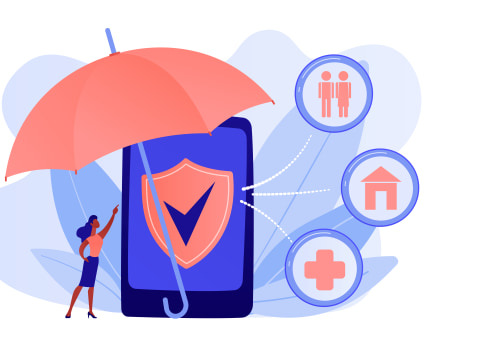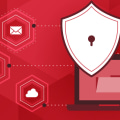Risk management is an essential component of any successful organization, and having comprehensive and up-to-date procedures in place is critical for ensuring the security of your data and operations. This article provides a comprehensive overview of risk management procedures and how they can help you protect your business from potential risks. We'll discuss the different types of risk management procedures, how to implement them effectively, and some of the benefits they offer. Finally, we'll review some of the key HIPAA security requirements that should be incorporated into any risk management plan.
By the end of this article, you will have a better understanding of risk management procedures and their importance in any organization. The risk management process begins with identifying potential risks. This involves gathering information from all stakeholders to identify potential threats and vulnerabilities. Once risks are identified, they must be assessed in terms of their potential severity, likelihood of occurrence, and possible impacts. This information can then be used to prioritize risk mitigation strategies.
When developing risk mitigation strategies, organizations should consider a variety of approaches, such as implementing security measures, establishing policies and procedures, and providing training and awareness programs. Once these strategies have been implemented, organizations should regularly monitor their effectiveness to ensure that they are working as intended. Organizations should also periodically review the risk management process to ensure that it is still appropriate for the current situation. It is important to note that risk management is not a one-time process, but rather a continuous cycle that should be regularly monitored and updated as necessary.
Additionally, organizations should ensure that all stakeholders are involved in the risk management process in order to ensure that all risks are identified and addressed appropriately. To ensure that the risk management process is effective, organizations should take steps to ensure that their employees understand the importance of proper risk management. This includes providing training and awareness programs to educate them on their roles and responsibilities. Additionally, organizations should develop procedures for reporting any identified risks and ensure that there is an appropriate response plan in place.
Furthermore, it is important to document all risk management activities, including decisions made, mitigation strategies implemented, and any changes made to the process. Finally, organizations should review their risk management process on a regular basis to identify any changes or improvements that may be needed. By performing regular reviews, organizations can ensure that their risk management process is up-to-date and remains effective in helping them to achieve their HIPAA security requirements.
Identifying Risks
Risk management is a critical process for any organization when it comes to achieving and maintaining HIPAA security requirements.Identifying potential risks is an important first step in the risk management process. Organizations must gather information from all stakeholders in order to identify potential risks. This includes gathering information from employees, customers, vendors, and other third-party stakeholders. By collecting this data, organizations can gain insight into potential risks and areas of vulnerability. Organizations should also be aware of industry trends and changes in technology that could affect the organization's operations. This includes monitoring changes in laws and regulations, as well as new technologies that could potentially open up new areas of risk. Finally, organizations should also engage with industry experts to identify potential risks that may not be immediately apparent.
These experts can provide valuable insights into emerging risks or potential problems that may have been overlooked. By gathering information from all stakeholders and monitoring industry trends, organizations can gain a better understanding of potential risks and develop strategies to address them.
Monitoring Risk Mitigation Strategies
Organizations should regularly monitor the effectiveness of their risk mitigation strategies to ensure they are effectively mitigating the risks identified. This can be done in a variety of ways, such as gathering feedback from stakeholders, conducting periodic assessments, or using automated tools. Gathering feedback from stakeholders is a great way to get an understanding of how well the organization is doing in terms of risk management. This can be done through surveys, interviews, focus groups, or other methods.Through this feedback, organizations can identify areas where their risk mitigation strategies may need to be improved. Periodic assessments are also important for monitoring the effectiveness of risk mitigation strategies. During these assessments, organizations should review the risks that have been identified and assess whether the strategies being used are effective in mitigating them. If any risks remain unmitigated or if the mitigation strategies are not effective, appropriate changes should be made.
Finally, automated tools can also be used to help organizations monitor the effectiveness of their risk mitigation strategies. These tools can provide insights into the performance of the strategies and identify areas where improvements can be made. Automated tools can also help organizations ensure that their strategies are up-to-date with the latest regulations and best practices.
Developing Risk Mitigation Strategies
Developing risk mitigation strategies is an important part of any organization's risk management process. It involves identifying potential risks, assessing their potential impacts, and developing an appropriate strategy to reduce or eliminate them.Organizations should consider a variety of approaches when developing risk mitigation strategies. One approach is to use a risk assessment tool, such as a FMEA (Failure Mode and Effects Analysis) or a SWOT (Strengths, Weaknesses, Opportunities and Threats) analysis. These tools can help identify areas of vulnerability and prioritize risks based on their potential impacts. Another approach is to develop a set of processes and procedures that help reduce the risk of potential incidents.
These processes and procedures can include employee training, policies and procedures, access control measures, or other measures that can help reduce the risk of data breaches or other security-related incidents. Finally, organizations should consider implementing a monitoring program to ensure that the risk management process is effective and that any risks that are identified are addressed in a timely manner. This can include regularly reviewing and updating policies, conducting regular audits, or other methods that can help to ensure that the risk management process is effective. By considering a variety of approaches when developing risk mitigation strategies, organizations can ensure that they are properly managing their risks and protecting their data.
Assessing Risks
Risk assessment is a critical step in the risk management process. It involves analyzing the potential severity, likelihood of occurrence, and possible impacts of each identified risk. By assessing the risks, organizations are able to determine which risks pose the greatest threat, as well as how to best mitigate them. The assessment process begins by determining the severity of each risk.This can be done by examining the potential impacts of the risk, including financial losses, reputational damage, and legal liabilities. For example, a data breach may result in significant financial losses due to the cost of responding to the breach and compensating affected customers. Additionally, a data breach could result in significant reputational damage due to negative press coverage and loss of customer trust. Finally, organizations may face legal liabilities if they fail to comply with applicable laws or industry regulations. Once the severity of each risk is determined, organizations must then assess the likelihood of each risk occurring.
This can be done by examining historical data and trends, as well as industry best practices. Additionally, organizations should consider external factors such as changing markets or technological advances that could increase or decrease the likelihood of certain risks occurring. Finally, organizations must assess the potential impacts of each risk. This includes both direct and indirect impacts such as financial losses, reputational damage, and legal liabilities. Additionally, organizations should consider any secondary impacts such as reduced customer trust or increased regulatory scrutiny. By assessing the risks, organizations are able to develop effective risk mitigation strategies that can help protect their organization from potential losses or liabilities.
Additionally, ongoing monitoring of the effectiveness of the risk management process can help ensure that any changes in risk levels are addressed quickly and effectively. Risk management is an essential process for any organization in order to comply with HIPAA security requirements. It involves identifying potential risks, assessing their potential impacts, and developing strategies to mitigate those risks. Additionally, organizations should ensure that all stakeholders are involved in the process and regularly monitor their risk mitigation strategies to ensure that they are working as intended. The risk management process should include identifying risks, assessing risks, developing risk mitigation strategies, and monitoring those strategies. These steps are critical to ensuring that organizations meet the HIPAA security requirements and maintain the integrity of their systems.








Leave Message